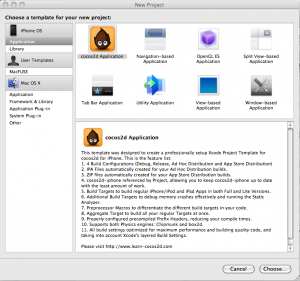I stumbled across this AppBoy Blog Post about Android and its Market. And it reminded me of what i think when i hear people swearing by the Android: the Android is not going to rule the world. Period.
The reasons are not many but they are crucial. First, Open Source is not a Feature! I hear that very often. “Yeah but Android is Open Source, you can’t compete with that!”. Uh-huh. As a matter of fact, i do not want to compete with Open Source if that means low-quality crap. There is no quality control on the Android Market. For some this spells freedom of choice and what not. And yes, Apple has made some decisions to pull apps from the App Store that a lot of people didn’t like. But let’s not forget that 99% of iPhone OS users just don’t care. There’s still enough diversity, and it’s not like Apple has pulled the Facebook App, Twitterific, Doodle Jump or Angry Birds. Apps that people really use and like. Keep in mind that whenever Apple decides to pull an App, recently that was because of mature content while allowing a big player in that market to keep his Apps online, people talk about that because (a) they like to get upset and (b) the blogosphere and news outlets need something to talk about. In the end it’s just hot air.
Let’s get back to Android though. So it’s open source. What does that even mean? The OS itself is open source. Great for the companies who build their own devices on that software. Bad for the consumer: you still have the same problem all mobile phones have. It’s like switching from Nokia and it’s hundreds of different devices united by the Ovi Store to Android, with its hundred and more and more diverging devices and a united App Store. Where does that lead us? A huge pile of free choice no one really wants if you so will. For developers it gets increasingly harder to develop Apps that run on all Android devices and what’s more, even if you manage to support 99% of all devices right now, tomorrow there will be a new device coming out that won’t run your app. As an independent developer this is hell. You have no way of telling whether supporting a specific line of Android devices will get you a significant sales boost. So how do you calculate how much time you’ll spend on each? It’s pure guesswork. I pity Android developers.
The iPhone market itself is hard but there’s one thing you can and should put all your efforts in: Marketing. You develop for one device (well, ok make that 3) while in the meantime you figure out which websites to target, what to blog, which communities to join, where to apply for App reviews, what Press Releases to send out, etc. The code is already done, Marketing your App is the hard part. It’s the same with the Android, except that the code part with its diverging devices is just as hard to do. And it’s just not fun adapting the same app to different devices. It’s one of the things i wouldn’t mind not doing.
Most of the outspoken people who choose Android choose it because they don’t like Apple (fair enough), or they don’t like closed ecosystems and enjoy (really?) everything that has the label “Open Source” attached to it. However, they’re a minority on the Android market. Most Android users just got what they needed: a working mobile phone. They have no idea, and no clue and don’t care about Open Source. For them, the label “Open Source” has no meaning.












